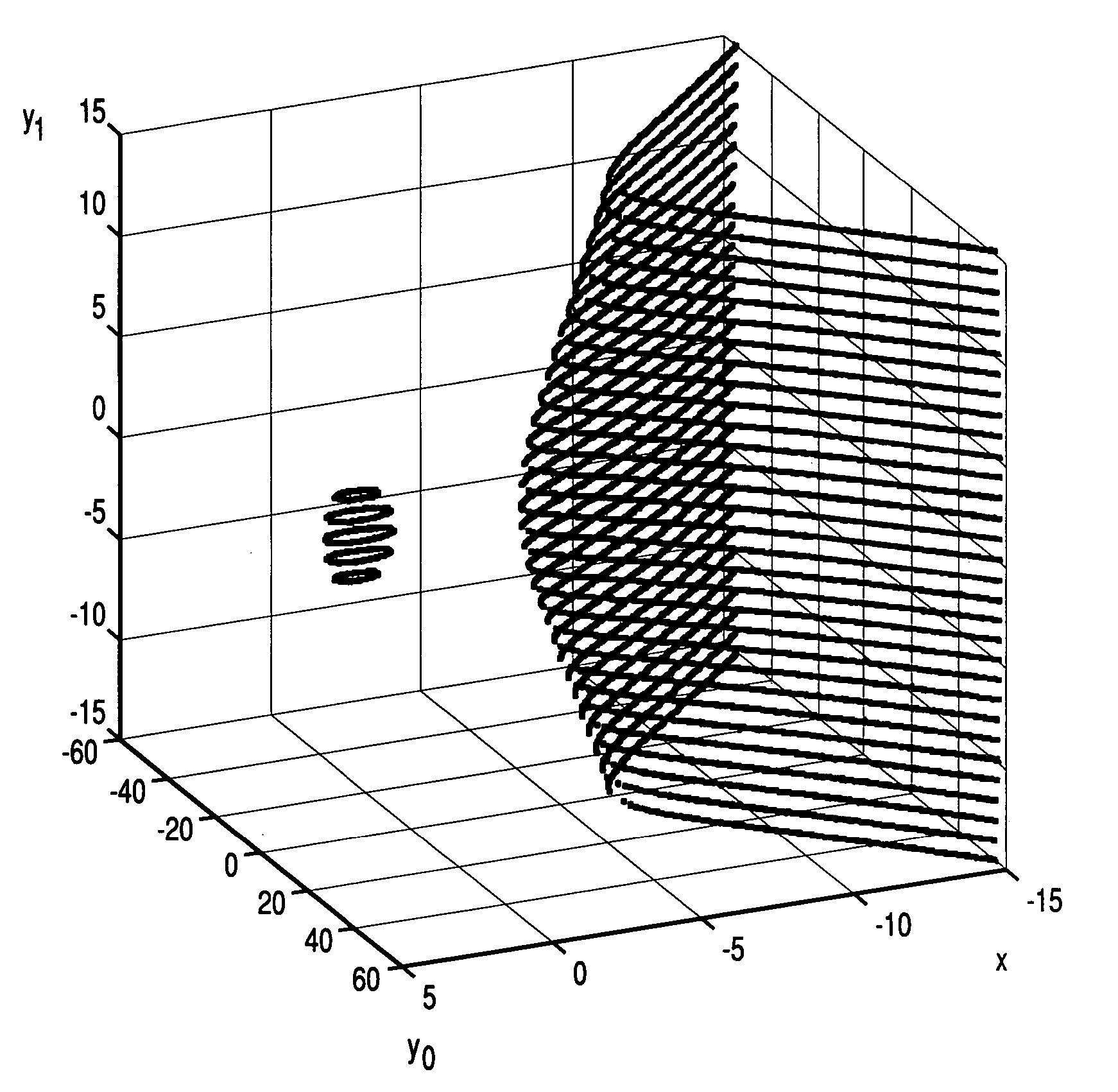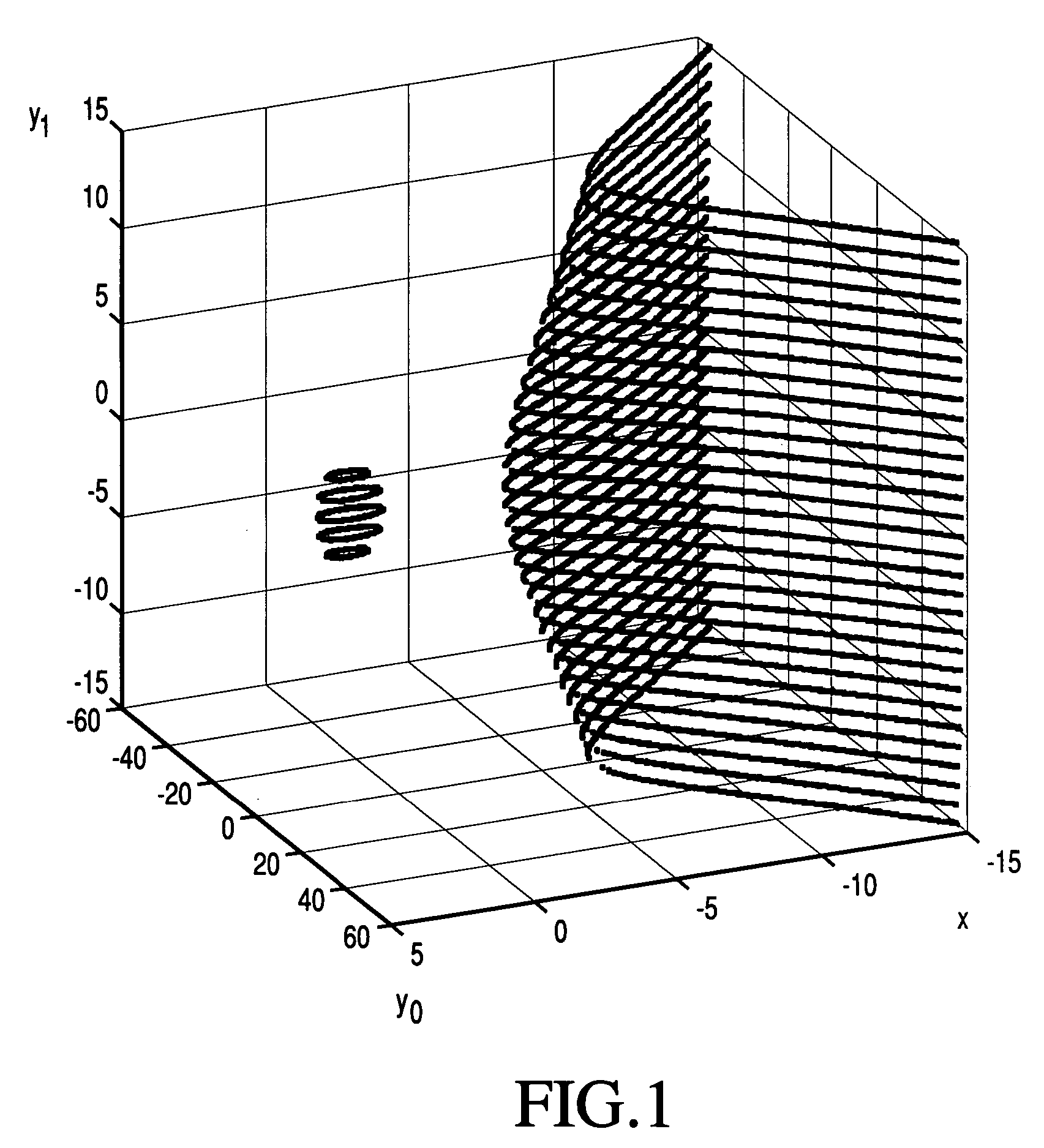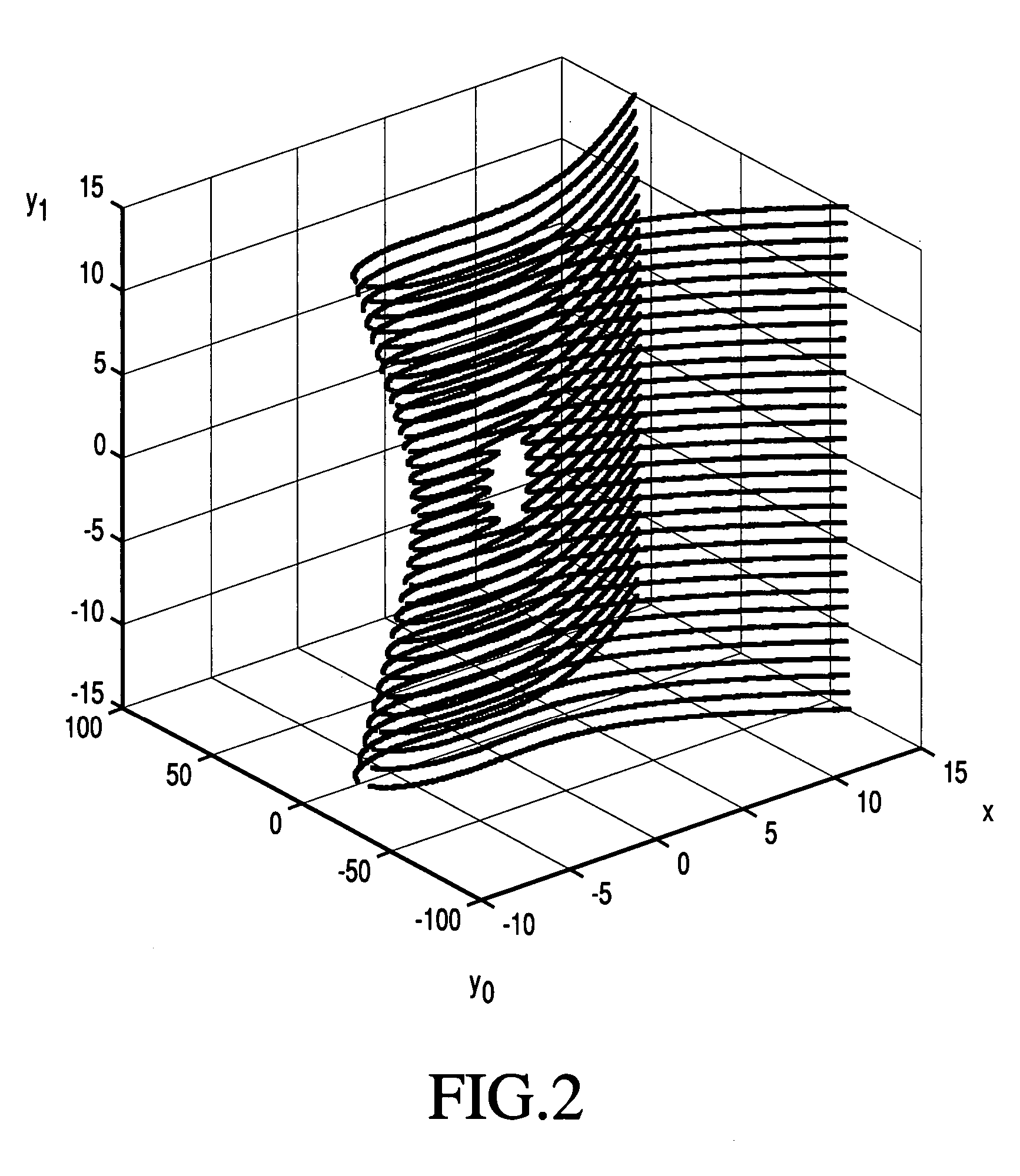Elliptic polynomial cryptography with multi y-coordinates embedding
a cryptography and polynomial technology, applied in the field of elliptic polynomial cryptography with multi ycoordinate embedding, can solve the problems of large number of cryptographic data transmissions, large amount of time and computational power required to perform crypto algorithms, and inability to achieve algorithms in any reasonable time using sophisticated computers, etc., to achieve the same level of security, reduce the complexity of the underlying finite field, and reduce the effect of large number
- Summary
- Abstract
- Description
- Claims
- Application Information
AI Technical Summary
Benefits of technology
Problems solved by technology
Method used
Image
Examples
case b
[0145] Writing the solution of x3′ in equation 4.13 in terms of Jacobian projective coordinates, equations 5.1a-b, and noting that the gradient in this case is given by equation 4.16, and noting that xo=x1=x2, one obtains, X3′V32=∑i∈Sny αi(3Xo2Vo4+a2αIYl,oVo3)2-2XoVo25.11
which can be written as X3′V32=∑l∈Sny,L(3Xo2+aVo4)24αlYl,o2Vo2-2XoVo25.12
[0146] Letting φ=∏l∈Sny,l αlYl,o25.13φl=φαlYl,o2and5.14V3=4φ Vo25.15
[0147] Using equations 5.13-5.15, equation 5.12 can be re-written as, X3′=2φ Vo2Ax3where5.16Ax3=(∑l∈Sny,Lφl2(3Xo2+aVo4)2-8φ Xo)5.17
[0148] Hence, X3′ can be computed without inversion or division using equation 5.16.
[0149] Substituting for x and yl in terms of the Jacobian projective coordinates, equations 5.1.a-b, in equation 4.6 and noting that the straight line gradient is given in equation 4.16 in this case, one obtains, Yl,3′V33=Yl,oVo3+(3Xo2Vo4+a)2αlYl,oVo3(X3′V32-XoVo2)5.18
[0150] Substituting equations 5.15 and 5.16 for V3 and X...
case b.ii
[0151] Point inverse is defined simply as
−(X,Y0,Y1, . . . , Yny,V)=(X,−Y0,Y1, . . . , Yny,V)
[0152] There are no field inversions or divisions in this case.
Case B.iii:
[0153] Point addition in this case is computed using the equations in cases A and B.i.
6 Elliptic Polynomial Cryptography with Multi Y-Coordinates:
6.1 Symmetric Elliptic Polynomial Cryptography with Multi Y-Coordinates:
[0154] In symmetric cryptography, a shared secret key or keys are used to encrypt and decrypt the message data bits. One approach of symmetric elliptic polynomial cryptography with multi y-coordinates based on a single shared secret key is carried out as follows: [0155] 1 Both the sending and receiving correspondent agree on the value ny, and the set of coefficients αi, a & bεF(p) for iεSny. They also need to agree on (i) a random number, k, that will be the shared secret key for communication, and (ii) a base point, (xB, y0,B, y1,B, . . . , yny,B)εECny+2.
[0156] The snding correspondent performs...
PUM
 Login to View More
Login to View More Abstract
Description
Claims
Application Information
 Login to View More
Login to View More - R&D
- Intellectual Property
- Life Sciences
- Materials
- Tech Scout
- Unparalleled Data Quality
- Higher Quality Content
- 60% Fewer Hallucinations
Browse by: Latest US Patents, China's latest patents, Technical Efficacy Thesaurus, Application Domain, Technology Topic, Popular Technical Reports.
© 2025 PatSnap. All rights reserved.Legal|Privacy policy|Modern Slavery Act Transparency Statement|Sitemap|About US| Contact US: help@patsnap.com



